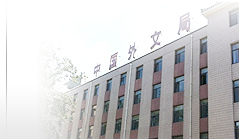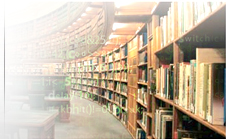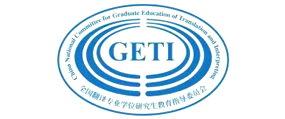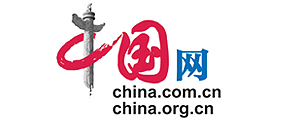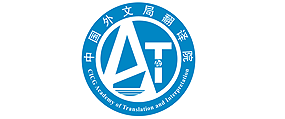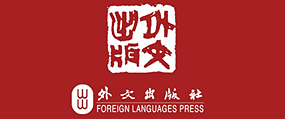中国翻译界60年回眸
追忆“毛著”翻译 / 刘习良 5
外交翻译60年 / 施燕华 9
从毛泽东著作的翻译谈建国以来的中译外工作 / 尹承东 13
深切缅怀季羡林先生 语朴情醇是正行——深切缅怀中国翻译界的一面旗帜季羡林先生 / 郭晓勇 17
译论研究
比较文学与翻译研究的文化转向 / 王宁 19
钱钟书对翻译概念的阐释及其对翻译研究的启示 / 张佩瑶 27
译史纵横
歌德笔下的“中国女诗人” / 谭渊 33
书刊评介
由静态、稳定走向动态、多变—《超越描述翻译学》评介 / 谭晓丽 39
高校本科翻译师资培训专题论坛 利器以善事,正名以顺言—参加高等院校本科翻译师资培训感言 / 张文涛 43
求真务实,迎接翻译教学新时代—四次参加翻译师资培训与我的翻译教学 / 李淑琴 46
关于本科口译教学的理性思考—中国译协高等院校本科翻译师资培训心得 / 和静 49
口译教学师资培训的几点感悟 / 胡敏霞 51
译技探讨
文本类型理论及其对翻译研究的启示 / 张美芳 53
对官方口号翻译有效性的实证研究 / 窦卫霖 祝平 61
隐喻认知观照下的颜色隐喻及翻译研究 / 黄海军 马可云 66
法律文体翻译基本原则探究 / 张法连 72
中英交替传译之显化现象:案例分析 / 张其帆 77
学术争鸣
从英汉模因差异看“托儿”英译的多维度思索 / 任开兴 82
自学之友
·译家译作·
英译汉:The City is Like Poetry (An excerpt from“Here is New York”) / 叶子南 译 86
翻译导读:注释与说明 / 叶子南 88
汉译英:《中华人民共和国国歌》(义勇军进行曲) / 黄俊雄 译 91
翻译导读:英译《中华人民共和国国歌》说明及中国歌曲英译入门须知 / 黄俊雄 91
词语选译
中国译协对外传播翻译委员会中译英研讨会最新讨论词汇选登 94
英文摘要 95
信息广角
本刊邮购信息(8) 本刊稿约(85)
《中国翻译》创刊30周年暨出版200期翻译研究有奖征文(16)
《第十八届世界翻译大会论文集》正式出版(42)
第八届全国口译大会暨国际研讨会一号公报及论文征集通知(96)
其它(32)
中文摘要
外交翻译60年
施燕华 外交部
摘 要:随着新中国的成立,外交翻译队伍诞生了。作为中国对外交流的桥梁,它始终受到了周恩来总理的关怀。外交翻译队伍是一支“招之即来,来之能战,严守机密,忠于祖国”的“文装解放军”。在改革开放的新形势下,外交翻译队伍茁壮成长,数量质量都不断提高。60年来外交工作的成就,包含着外交翻译工作者的辛勤汗水。
关键词:外交;翻译;60年
中图分类号:H059 文献标识码:A 文章编号:1000-873X (2009)05-0009-04
比较文学与翻译研究的文化转向
王 宁 上海交通大学/清华大学
摘 要: 对于翻译研究中的文化转向,比较文学和文化研究都做出了重要的推进。在过去相当长的时期内,翻译研究是依附于比较文学的学科地位而得以存在的,后来才逐步 走出比较文学的阴影而成为一个相对独立的学科。在今天的文化研究语境下,比较文学受到的冲击是明显的,但翻译研究却获益良多,因而它完全可以游刃于这两个 学科之间,并借助于这两个学科的力量实现自己的“文化转向”,在这方面,英美比较文学和翻译研究学者勒菲弗尔和巴斯奈特的开拓性贡献是不可忽视的。
关键词:比较文学;翻译研究;文化转向;文化研究;学科
中图分类号:H059 文献标识码:A 文章编号:1000-873X (2009)05-0019-08
钱钟书对翻译概念的阐释及其对翻译研究的启示*
张佩瑶 香港浸会大学
摘 要:本文借用了钱钟书先 生在《林纾的翻译》一文中有关翻译含义的论述,重点分析我国传统译论中几篇富有开拓意义的文章,尤其是文章里几组概念词,展示它们如何言简意赅地带出“翻 译”这个概念的多义性。本文又从结合传统与现代、中国翻译话语与西方翻译话语的目的出发,探讨这几组概念词的理论意义,发挥它们的言说功能,利用它们建构 一个可供本国及外国翻译学学者继续研究何谓翻译的分析框架,并回归我国传统虚实相生的思想,以钱钟书先生的四个字“虚涵数意”总结翻译作为一个概念的特质。
关键词:钱钟书;翻译; 概念;“虚涵数意”
中图分类号:H059 文献标识码:A 文章编号:1000-873X (2009)05-0027-06
·纪念歌德诞辰260周年(1749-2009)·
歌德笔下的“中国女诗人”*
谭渊 华中科技大学
摘 要:清代文集《百美新咏》于1824年被译介到欧洲后引发了出人意料的反响。本文以1827年歌德从英文转译的两首中国诗为重点,对中英德三种文本进行对比研究。文中特别指出,中国古代“才女”作品的译介在19世纪对欧洲文学界正确评价女性诗人和女性文学曾产生积极影响。同时,本文就中国古典文学作品对歌德“世界文学”概念的影响作出了新的解释。
关键词:歌德;诗歌翻译;《百美新咏》;世界文学;女性文学
中图分类号:H059 文献标识码:A 文章编号:1000-873X (2009)05-0033-06
文本类型理论及其对翻译研究的启示 *
张美芳 澳门大学
摘 要:文本类型理论是莱思在70年 代初提出的翻译批评和评估模式中的基本理论。莱思根据布勒的语言功能模式把文本划分为三种主要的类型,即表情型、信息型和操作型;并建议根据文本功能及其 相对应的语言特点和使用的交际情景采取相应的翻译策略。本文详细阐述莱思的文本类型理论、追溯其理论根源,简述其他学者提出的相关观点,并结合英汉译例讨 论文本类型理论对翻译研究,尤其是对英汉翻译研究的启示。
关键词:文本类型;语言功能;翻译策略
中图分类号:H059 文献标识码:A 文章编号:1000-873X (2009)05-0053-08
对官方口号翻译有效性的实证研究*
窦卫霖 对外经济贸易大学 祝平 北京化工学院
摘 要:中国官方口号是宣传政治理念和主张的有效形式,其英语翻译能否被外国读者理解,直接关系到外宣效果。本文通过对母语为英语的外国读者进行问卷调查和后续访谈,探讨我国近30年政府重要口号翻译的有效性。通过对英语读者对这些翻译理解正误偏差情况的研究,分析产生误解或费解的原因,提出关于提高口号翻译有效性的对策。
关键词:官方口号;翻译有效性;英语读者;实证研究
中图分类号:H059 文献标识码:A 文章编号:1000-873X (2009)05-0061-05
隐喻认识观照下的颜色隐喻及翻译研究
黄海军* 浙江理工大学 马可云 绍兴文理学院
摘 要: 隐喻在我们的生活中无处不在,成为我们生存的基本方式。颜色隐喻广泛应用于我们的生活和文学作品中。本文从认知的视角探讨了颜色隐喻翻译的两种方法:转换 意义和直接表达并就颜色隐喻的翻译进行了隐喻解读的实证研究。研究结果表明:颜色隐喻从中文翻译到英语的过程中隐喻的含义有所丢失。
关键词:颜色隐喻;翻译方法;颜色隐喻解读
中图分类号:H059 文献标识码:A 文章编号:1000-873X (2009)05-0066-06
法律文体翻译基本原则探究*
张法连 中国政法大学
摘 要: 法律文体翻译不同于其他的文体翻译,传统的翻译原则很难适应法律翻译的实践需要。法律语言有其自身的特点和规律,这些特点和规律决定了法律翻译的基本原 则。本文通过对法律翻译实践的研究总结,提出法律文体翻译应该遵循的四项基本原则:准确严谨;清晰简明;前后一致;语体规范。
关键词:法律文体;翻译;原则;探究
中图分类号:H059 文献标识码:A 文章编号:1000-873X (2009)05-0072-05
中英交替传译之显化现象:案例分析
张其帆 香港理工大学
摘 要:本文以定性研究法中的语篇分析法讨论单一交替传译案例中“显化”的现象。显化现象研究多以笔译为主,讨论口译中显化的论文数量相对较少,本文冀望能起抛砖引玉之效。
关键词:交替传译;显化;中译英
中图分类号:H059 文献标识码:A 文章编号:1000-873X (2009)05-0077-05
Contents
Comparative Literature and the Cultural Turn in Translation Studies / Wang Ning 19
Qian Zhongshu’s Conception of Yi and Its Implications for Contemporary Translation Studies / Martha Cheung 27
Text Typology and Its Implications for Translation Studies / Zhang Meifang 53
A Survey on the Translation Effectiveness of Chinese Official Slogans / Dou Weilin & Zhu Ping 61
The Principles of Legal Translation / Zhang Falian 72
Explicitation in Chinese-to-English Consecutive Interpreting: A Case Study / Cheung Kay-fan 77
E/C Translation Practice: The City is Like Poetry (An excerpt from“Here is New York” by E. B. White) / Ye Zinan 86
C/E Translation Practice: The National Anthem of the People’s Republic of China / Harry J. Huang 91
English Abstracts of Major Papers in This Issue / 95
Abstracts of Major Papers in This Issue
Comparative Literature and the Cultural Turn in Translation Studies
by Wang Ning (Shanghai Jiaotong University / Tsinghua University, China) p. 19
Abstract: To the cultural turn in translation studies, comparative literature has made tremendous contributions. For decades, translation studies had depended on an affiliation with the discipline of comparative literary studies for its own survival. And it is due to the promotion by some comparatists-cum-translation scholars that translation studies eventual came out of the shadow of comparative literature and gained its own disciplinary independence. The relationship between the two disciplines has been further changed with the ascendancy of cultural studies. Whereas comparative literature has suffered a lot within a cultural studies-dominated academic context, translation studies has benefited a great deal by situating itself between these two research areas and seizing the opportunity for realizing its own “cultural turn.” It is by no means accidental that André Lefevere and Susan Bassnett, with their dual identity as both comparatists and translation scholars, have played a key role in translation studies’ successful negotiation of the turn.
Key words: comparative literature; translation studies; cultural turn; cultural studies; discipline
Qian Zhongshu’s Conception of Yi and Its Implications for Contemporary Translation Studies
by Martha Cheung (Hong Kong Baptist University, Hong Kong, China) p. 27
Abstract: Inspired by Qiang Zhongshu’s insight into the manifold meanings of yi (译,translation), this article analyzes a number of key terms used in classical Chinese discourse for denoting the concept of translation in an effort to seek out their contemporary relevancy and to fuse the traditional with the modern, the Chinese with the Western, perspectives in the subject. The author calls attention to how these terms produce different configurations of the concept ‘fanyi’ (translation), explores the theoretical significance of each of them, and offers a framework for further studying the definition of translation. Going back to traditional Chinese idea about the interplay between xu (虚, vacuity) and shi (实, concreteness), this article defines translation as a concept that is xuhan shuyi (虚涵数意), i.e., “loosely/notionally holding several meanings simultaneously.”
Key words: Qian Zhongshu; translation; definition; xuhan shuyi
Text Typology and Its Implications for Translation Studies
By Zhang Meifang (University of Macau, Macao, China) p. 53
Abstract: Text typology in Translation Studies refers to the theory developed by Katharina Reiss in the early 1970s for translation quality assessment. Based on K. Bühler’s three-way categorization of language functions, Reiss suggests that all texts be classified into three types: informative, expressive and operative. She also links the three functions to their corresponding language dimensions as well as to translation strategies. After giving an overview of Reiss’s text typology and other scholars’ suggestions, this paper tries to explore possibilities of applying the text typology theory to the study of Chinese-English translation by analyzing a number of translation cases.
Key words: text types; language functions; translation strategies
A Survey on the Translation Effectiveness of Chinese Official Slogans
by Dou weilin (University of International Business and Economics, Beijing, China)
& Zhu Ping (Beijing University of Chemical Technology, Beijing, China) p. 61
Abstract: Proper translation of Chinese official slogans is of vital importance in foreign publicity. This article aims to study the efficiency of existing translations of Chinese official slogans by way of questionnaire and follow-up interviews among and with native English speakers. The survey shows that while a majority of the slogans makes sense to the native speakers, misunderstanding and failures of understanding still exist due to ideological, cultural and linguistic differences. It also raises key points of consideration for improving translation efficiency of Chinese official slogans.
Key words: official slogans; translation effectiveness; native reader of English; survey
The Principles of Legal Translation
by Zhang Falian (China University of Political Science and Law,Beijing,China) p. 72
Abstract: Because of the unique style demanded of legal translation, it is often counterproductive to simply apply conventional translation criteria to this special genre. Legal discourse has its own characteristics and is governed by its own laws, which makes it necessary for legal translation to be guided by a unique set of principles. These include the principle of strict accuracy; of clarity and concision; of consistency and of linguistic and stylistic standardization.
Key words: legal discourse; translation; principle; inquiry
Explicitation in Chinese-to-English Consecutive Interpreting: A Case Study
by Cheung Kay-fan (The Hong Kong Polytechnic University, Hong Kong, China) p. 77
Abstract: This is a discourse analysis-based case study of explicitation in Chinese-to-English consecutive interpreting. Three types of explicitation are identified and each is illustrated with examples found in the corpus under study.
Key words: consecutive interpreting; explicitation; Chinese-to-English

